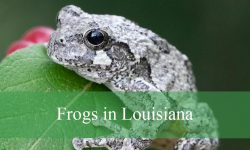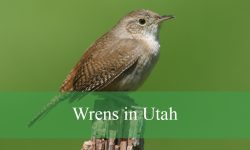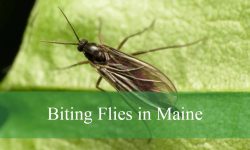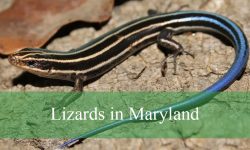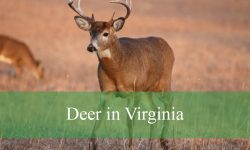In Nevada can be found a stunning variety of hummingbirds, from common year-round residents to rare seasonal visitors. Their dazzling colors and rapid wingbeats make them a favorite among birdwatchers.
Hummingbirds inhabit deserts, mountains, and urban gardens, showcasing unique behaviors like hovering at feeders and performing impressive aerial displays. Each species’ markings and habits make identification both challenging and rewarding.
This guide highlights 10 hummingbird species in Nevada, providing detailed descriptions, identification tips, habitats, and the best times and places to observe these remarkable birds.
Types of Hummingbirds Found in Nevada
Anna’s Hummingbird (Calypte anna)

Anna’s Hummingbirds are medium-sized hummingbirds, measuring around 3.9–4.3 inches in length with a wingspan of 4.7–5.1 inches. Males are easily recognized by their brilliant iridescent emerald green back and striking rose-pink throat (gorget), which shines brightly in sunlight. Females have a duller green back with a lightly speckled throat, making them subtler but still distinctive.
These hummingbirds are highly active and exhibit the typical hovering flight while feeding from nectar. They are known to be territorial, often chasing away other hummingbirds from feeders or flowering plants. Their rapid wingbeats allow them to hover in place while sipping nectar and they also consume small insects and spiders for protein.
Anna’s Hummingbirds are highly adaptable to urban and suburban environments, frequently visiting gardens, parks, and backyard feeders. They build small cup-shaped nests, usually placed on tree branches or shrubs, often camouflaged with moss, lichen, and spider silk to blend in with surroundings.
In Nevada, Anna’s Hummingbirds are most commonly found in the western and southern regions, especially near human habitation. They are resident year-round in areas with abundant flowering plants, although some individuals may move slightly to lower elevations or warmer areas during the coldest months.
Black-chinned Hummingbird (Archilochus alexandri)
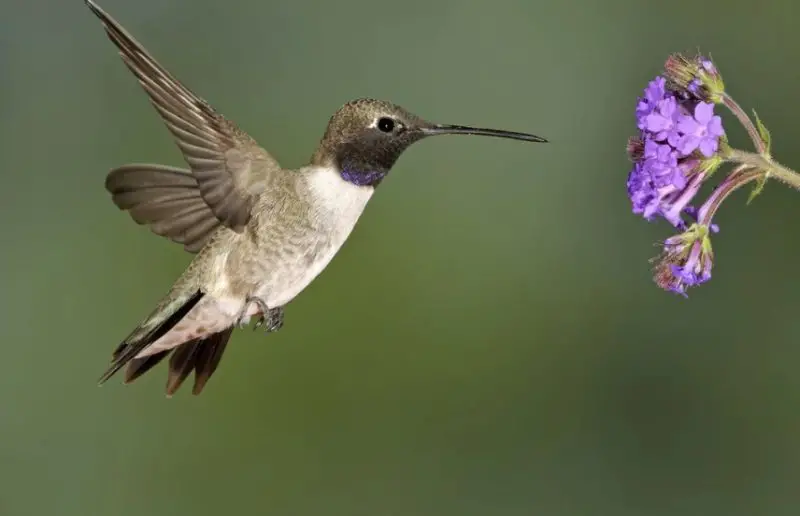
Black-chinned Hummingbirds are small, measuring 3–3.5 inches in length with a wingspan of about 4.3–4.7 inches. Males are notable for their metallic green back, grayish underparts, and distinctive black throat bordered by a thin violet band. Females and juveniles are paler with a lightly streaked throat, which helps them blend into desert environments.
These birds are highly energetic and display rapid, darting movements while foraging. They feed primarily on nectar from desert shrubs, flowers, and garden plants, supplementing their diet with small insects and spiders. Males aggressively defend feeding territories and display a characteristic tail-spread and dive during courtship.
Black-chinned Hummingbirds typically inhabit arid and semi-arid regions, including desert scrub, canyons, and riparian corridors. They build small cup-shaped nests using plant fibers, spider webs, and lichens, usually positioned on branches in protected areas away from predators.
In Nevada, Black-chinned Hummingbirds are widely distributed throughout the southern and central desert regions. They are summer breeders in the state, with populations concentrated in areas with abundant flowering vegetation, particularly along washes, river corridors, and urban gardens.
Broad-tailed Hummingbird (Selasphorus platycercus)

Broad-tailed Hummingbirds are medium-sized, about 3.5–4 inches long with a wingspan of 4.3–4.7 inches. Males have a bright metallic green back, rose-red throat, and a slightly forked tail edged with white. Females are duller with greenish backs and pale throats with faint streaks, making identification more subtle.
These hummingbirds are known for their impressive aerial displays, especially during mating season. Males perform a distinctive “diving display,” producing a high-pitched trill with their tail feathers. They feed primarily on nectar but also consume small arthropods, hovering skillfully to access flowers in meadows and open woodlands.
Broad-tailed Hummingbirds prefer montane habitats, including coniferous forests, subalpine meadows, and mountain streams. Nests are built on small branches or shrubs, often camouflaged with lichen and moss. These hummingbirds are migratory, moving to lower elevations or southwestern regions during winter.
In Nevada, Broad-tailed Hummingbirds are found mostly in northern and central mountainous areas during summer. They favor elevations with abundant wildflowers, particularly along forest edges, alpine meadows, and riparian zones, making them a summer highlight for birdwatchers in higher terrain.
Rufous Hummingbird (Selasphorus rufus)
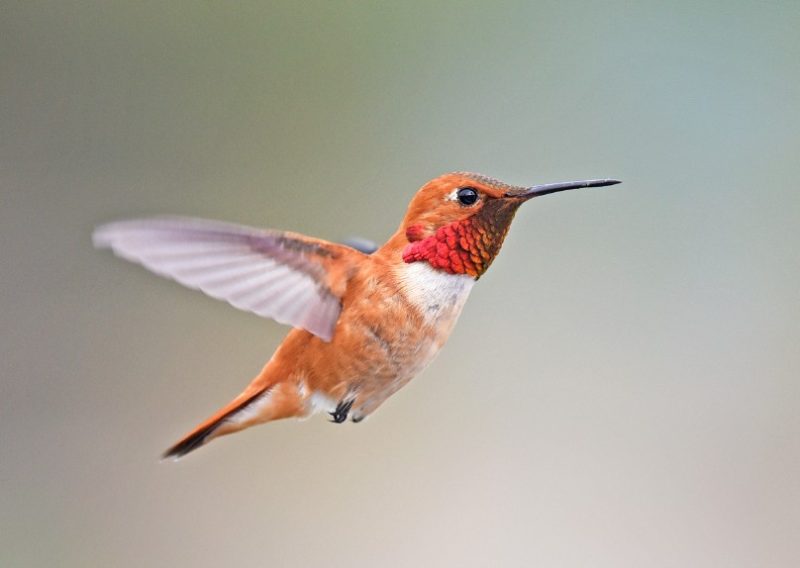
Rufous Hummingbirds are small but feisty, measuring 2.8–3.5 inches in length with a wingspan of 3.9–4.3 inches. Males are striking with bright orange-red plumage, including the back, sides, and iridescent red throat. Females are mostly green above with pale underparts and light orange flanks, featuring a lightly speckled throat.
These hummingbirds are known for their aggressive behavior, often displacing larger species from feeders or flowering areas. They feed on nectar from tubular flowers and small insects for protein. Their rapid, hovering flight allows them to maneuver skillfully among flowers and shrubs, making them highly energetic and conspicuous during migration.
Rufous Hummingbirds favor open areas, mountain meadows, and forest edges. They build cup-shaped nests on tree branches or shrubs using plant down and spider silk, often well-hidden in dense foliage. These birds are long-distance migrants, traveling from Mexico and the Pacific Coast to breed in the northwestern U.S. and Canada.
In Nevada, Rufous Hummingbirds are primarily migrants passing through in spring and fall. They are occasionally found breeding in higher northern or central mountainous areas, particularly where wildflowers and nectar sources are abundant, making their brief appearances highly noticeable.
Calliope Hummingbird (Selasphorus calliope)
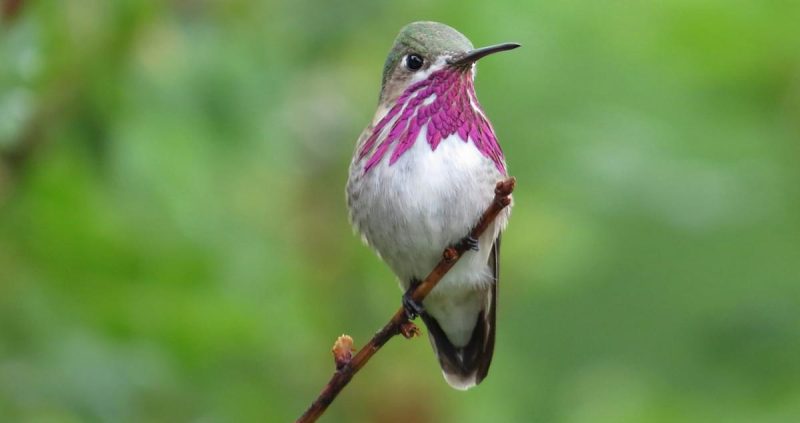
Calliope Hummingbirds are the smallest hummingbird species in North America, measuring only 3–3.25 inches long with a wingspan of 4–4.3 inches. Males are easily identified by their striking magenta throat streaks extending down the chest and metallic green back. Females are more subdued, with green upperparts and pale, lightly streaked underparts.
These birds are energetic and agile foragers, hovering rapidly while feeding on nectar from small flowers and shrubs. They also capture tiny insects mid-air or from leaves, adding essential protein to their diet. Males perform aerial displays, including dives with buzzing tail sounds to attract females.
Calliope Hummingbirds prefer montane and subalpine habitats, including coniferous forests, meadows, and mountain streams. Nests are tiny cups made from plant fibers, moss, and spider silk, usually placed on protected branches. These birds are migratory, traveling to Mexico for winter and returning to the Pacific Northwest for breeding.
In Nevada, Calliope Hummingbirds are primarily summer breeders in northern and western mountain regions. They are most commonly observed at higher elevations where wildflowers and nectar sources are plentiful, making them a rare but rewarding sight for birdwatchers exploring the state’s mountainous areas.
Costa’s Hummingbird (Calypte costae)
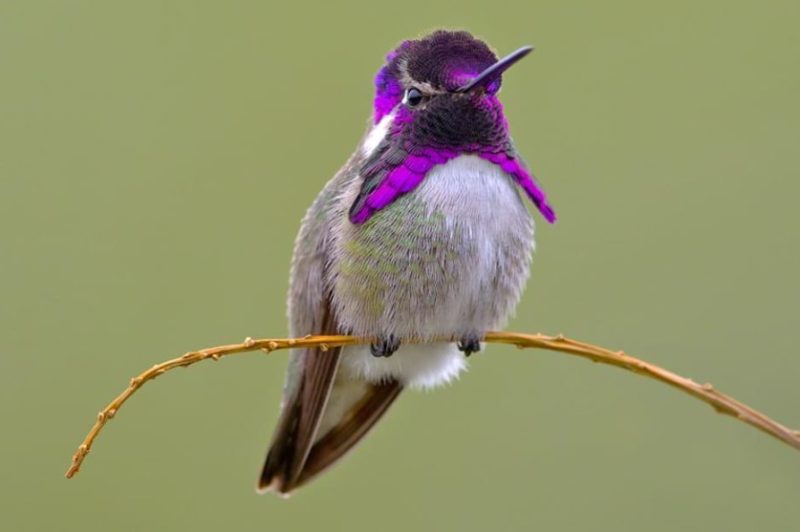
Costa’s Hummingbirds are small, measuring around 3–3.25 inches in length with a wingspan of 4–4.5 inches. Males are easily identified by their striking iridescent purple throat and crown, contrasting sharply with a green back and grayish underparts. Females are more subdued, with green upperparts and pale underparts, occasionally showing a faint purple throat patch.
These hummingbirds are highly energetic and agile, hovering steadily while feeding on nectar from desert wildflowers and cacti. They also capture tiny insects for protein, often darting quickly between flowers. Males perform dramatic courtship dives, producing a whistling sound with their tail feathers to attract females.
Costa’s Hummingbirds prefer desert scrub, washes, and arid regions, particularly in southern Nevada. They build tiny cup-shaped nests on shrubs or low branches, camouflaged with plant fibers and lichen. Their habitats often include areas with abundant flowering cacti and desert shrubs.
In Nevada, Costa’s Hummingbirds are primarily found in southern desert regions, including the Mojave Desert. They are mostly summer residents, taking advantage of blooming desert plants for nectar and insect prey, and are less commonly observed outside their preferred arid habitats.
Allen’s Hummingbird (Selasphorus sasin)

Allen’s Hummingbirds are small, around 3–3.25 inches long with a wingspan of 3.9–4.5 inches. Males have bright orange-red throats, green backs, and rufous flanks, while females display more muted green and orange tones with pale underparts and faint streaks. Their small size and vivid coloring make them noticeable during migration.
These hummingbirds are feisty and energetic, feeding on nectar from tubular flowers and catching small insects for protein. Males are territorial, performing aerial displays and chasing away intruders from feeding areas. Their flight is rapid and agile, allowing them to hover precisely while feeding.
Allen’s Hummingbirds prefer coastal scrub and semi-open habitats in their core range, but in Nevada, they are rare migrants. They construct tiny nests on sheltered branches using plant fibers, moss, and spider silk. Nest placement is often concealed to protect against predators.
In Nevada, Allen’s Hummingbirds are occasional visitors, mostly in western regions during migration periods. They are not common breeders in the state, but their sightings provide exciting opportunities for birdwatchers in areas with flowering gardens or natural desert flora.
Violet-crowned Hummingbird (Amazilia violiceps)
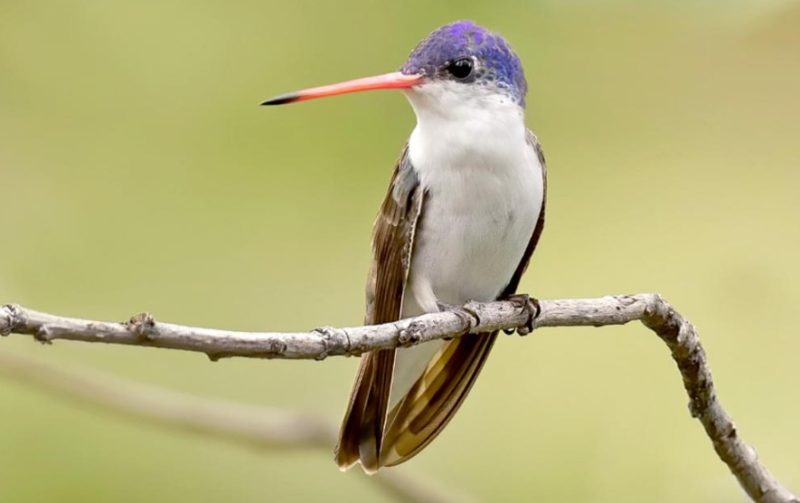
Violet-crowned Hummingbirds are medium-sized hummingbirds, approximately 3.5–3.75 inches long with a wingspan of 4.3–4.7 inches. They are easily recognized by their violet crown, green back, and white underparts, with a long, slightly curved bill adapted for tubular flowers. Both sexes have similar coloring, though females are slightly duller.
These birds are active foragers, feeding primarily on nectar from desert flowers and small shrubs. They supplement their diet with tiny insects, which they capture in flight or from foliage. Males display territorial behavior during the breeding season, often chasing other hummingbirds away from nectar sources.
Violet-crowned Hummingbirds inhabit desert scrub, thorn forests, and riparian areas in their main range, which extends from Mexico into the southwestern U.S. They build cup-shaped nests on low branches near shrubs or small trees, often camouflaged with moss and plant fibers.
In Nevada, Violet-crowned Hummingbirds are very rare visitors, occasionally spotted in southern desert regions during migration or in areas near the Arizona border. Their sightings are uncommon, making them highly prized by birdwatchers and hummingbird enthusiasts.
Blue-throated Hummingbird (Lampornis clemenciae)
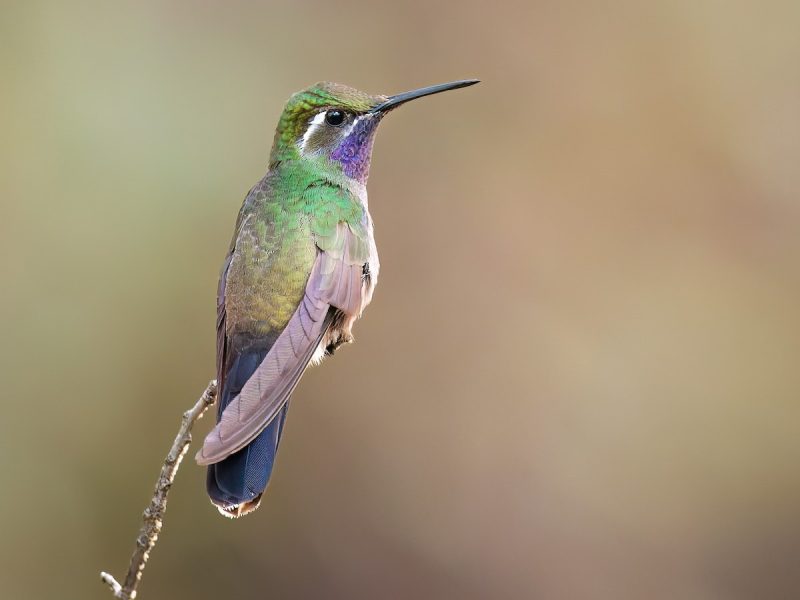
Blue-throated Hummingbirds are the largest hummingbirds in North America, measuring 4–5 inches in length with a wingspan of 5–6 inches. Males are distinguished by their vivid blue throat, green back, and grayish underparts. Females are slightly smaller with a pale throat and green upperparts, but still have a noticeable bluish hue.
These hummingbirds are active and agile foragers, feeding on nectar from large flowers and also capturing small insects for protein. Males are territorial and perform aerial displays to establish dominance and attract females, diving swiftly from perches to impress potential mates.
Blue-throated Hummingbirds prefer riparian habitats, canyons, and oak or pine woodlands. They build cup-shaped nests on sturdy branches, often high above the ground, using moss, plant fibers, and spider silk for stability and camouflage.
In Nevada, Blue-throated Hummingbirds are extremely rare visitors, mostly in southern mountainous areas near Arizona and New Mexico borders. Their presence is sporadic, usually limited to migration periods or occasional strays from their primary range.
Broad-billed Hummingbird (Cynanthus latirostris)
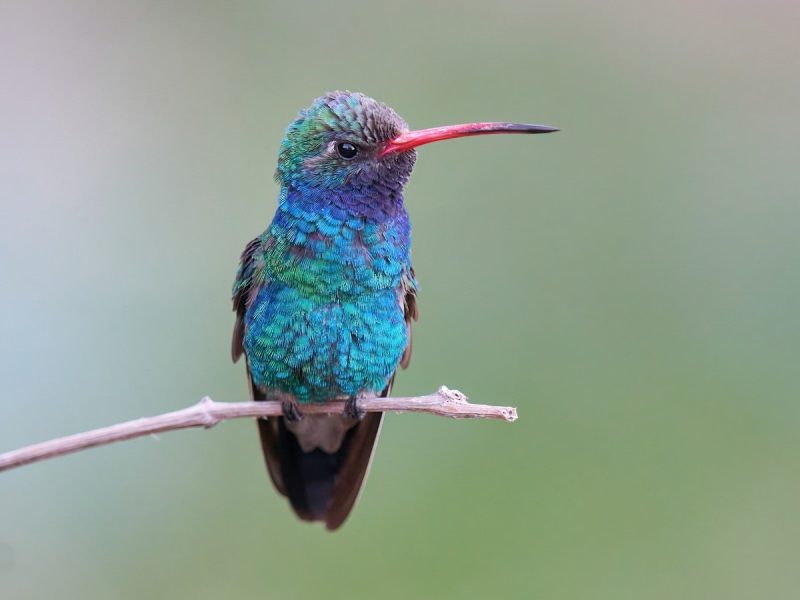
Broad-billed Hummingbirds are medium-sized, about 3.25–3.5 inches long with a wingspan of 4–4.5 inches. Males have a brilliant metallic green body, bright red bill with a black tip, and iridescent blue throat. Females are duller, with green upperparts, pale underparts, and a grayish throat, lacking the bright colors of males.
These hummingbirds are energetic feeders, hovering to sip nectar from flowers and catching small insects mid-flight. Males are territorial, performing dives and tail-spread displays to defend feeding territories. Their long, curved bill allows them to access deep tubular flowers that other species cannot reach.
Broad-billed Hummingbirds inhabit desert canyons, scrub, and riparian corridors in their main range, which extends into northern Mexico and the southwestern U.S. They build small cup-shaped nests on sheltered branches, camouflaged with plant materials and spider silk.
In Nevada, Broad-billed Hummingbirds are very rare visitors, mostly seen in southern desert regions near the Arizona border. Their appearances are unpredictable, making them exciting finds for avid birdwatchers exploring southern Nevada’s desert landscapes.
FAQs About Hummingbirds in Nevada
What species of hummingbirds can be found in Nevada?
Nevada hosts around 10 hummingbird species, including both common and rare visitors. The most common are Anna’s Hummingbird, Black-chinned Hummingbird, Broad-tailed Hummingbird, Rufous Hummingbird, and Calliope Hummingbird. Rare species include Costa’s, Allen’s, Violet-crowned, Blue-throated, and Broad-billed Hummingbirds.
When is the best time to see hummingbirds in Nevada?
The best time varies by species. Resident species like Anna’s Hummingbird can be seen year-round, while migratory species such as Rufous and Calliope Hummingbirds are mostly seen during spring and fall migration. Summer months are ideal for observing Broad-tailed and Calliope Hummingbirds in mountainous regions.
Where in Nevada are hummingbirds most commonly seen?
Urban areas, gardens, parks, and desert regions are ideal for common species. Specific locations include Las Vegas, Henderson, Reno, Carson City, the Mojave Desert, Pahrump Valley, and northern mountain ranges. Rare species are usually found near the southern border with Arizona, often in riparian areas or desert washes.
What do hummingbirds in Nevada eat?
Hummingbirds primarily feed on nectar from flowers and hummingbird feeders. They also consume small insects and spiders for protein. Favorite flowers include tubular species and desert blooms, which provide essential energy for their high metabolism.
How can I attract hummingbirds to my backyard in Nevada?
Plant native flowering plants that bloom during different seasons, and use hummingbird feeders filled with sugar water (no red dye). Place feeders in shady, sheltered spots to protect birds from predators and extreme heat. Regularly clean feeders to prevent mold or bacteria.
Are any hummingbirds in Nevada endangered or at risk?
Most hummingbirds in Nevada are not currently endangered, though some rare species may be vulnerable due to habitat loss or climate change. Maintaining native plants, safe feeders, and water sources helps support local populations.
How can I identify the different hummingbird species?
Identification relies on size, coloration, throat patterns, and tail shapes. Males are often more brightly colored with iridescent throats, while females are subtler. Observing behavior, preferred habitats, and migration times can also help distinguish species.
Do hummingbirds migrate through Nevada?
Yes, several species such as the Rufous, Calliope, and Allen’s Hummingbirds migrate through Nevada. Migration typically occurs in spring (March–May) and fall (August–October). Resident species like Anna’s Hummingbird may stay year-round in suitable habitats.

